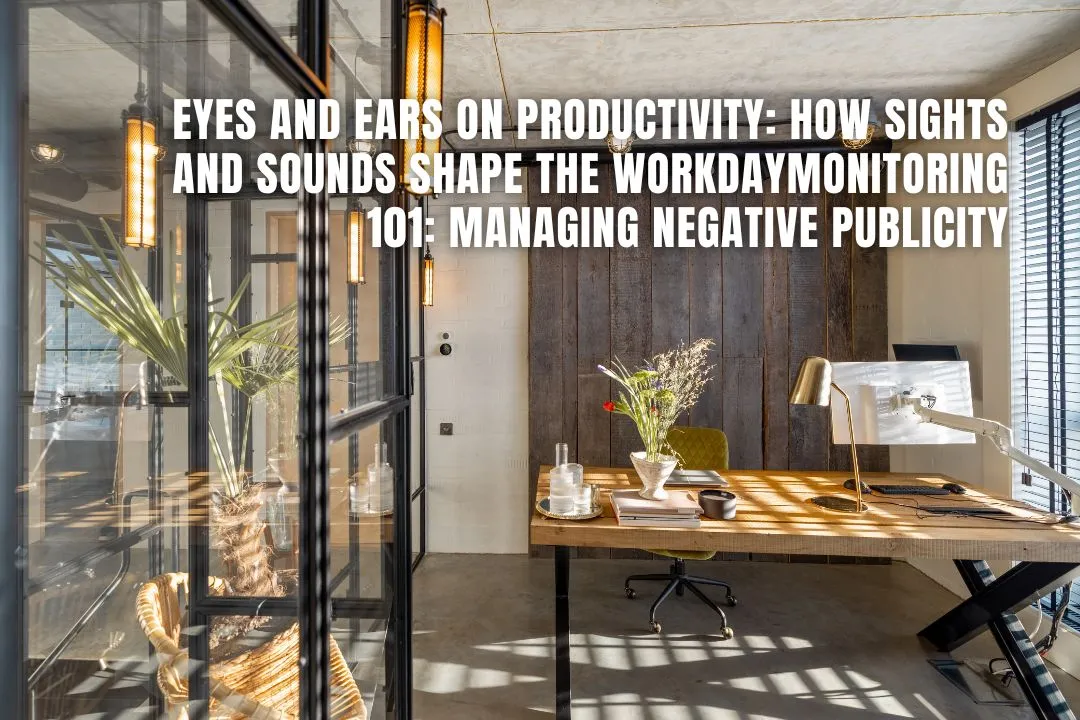
A workplace is never neutral. It speaks. It hums, buzzes, glows, and pulses. Even before a conversation begins or a task is underway, the environment has already set a tone. Colours flicker in the corner of your eye. Air conditioners whisper or roar. Somewhere a colleague laughs, a printer whirs, a phone chimes. Every sense is involved, but none more constantly than sight and sound.
Designing for productivity and comfort often begins with visuals. People do not simply sit at desks and type. Instead, they observe, absorb, and react. Natural light pouring in through wide windows invites alertness. Harsh overhead fluorescents, flickering and cold, do the opposite. Wall colors matter. Muted tones calm the mind while saturated ones tend to stimulate. Open spaces filled with green plants also have a soft psychological impact. They signal care, connection, and breathing room.
But visuals alone cannot carry the weight of the workspace experience. Sound plays an equal role in productivity and well-being. Constant noise, even subtle, can fray focus. The distant clatter of keyboards, muffled conversations, or HVAC systems may seem small, but they add up. People end up tuning in or out, spending energy on filtering rather than working on tasks.
The right blend of sound can shift that energy. Soft instrumental music, gentle ambient soundscapes, or the quiet hush of an acoustically thoughtful layout don’t just fill space. They shape the mood of it. Quiet zones invite concentration. Background rhythm in creative areas encourages flow. A silence too deep can feel oppressive. A hum too loud can agitate. It is all about balance, and getting that balance right requires intention.
Sound plays a crucial role in both productivity and well-being. Services offering royalty-free background music streams allow businesses to set the right atmosphere without worrying about complex licensing. With curated playlists for focus, relaxation, or energy, they help improve concentration, reduce stress, and create a welcoming environment for employees and customers.
When employees feel visually and sonically supported, they are more likely to stay engaged. It is about removing friction, not forcing motivation. A well-lit workspace with the right acoustic flow creates room for focus without pressure, fostering creativity and mental clarity. This type of environment invites presence, not just attendance, allowing employees to feel more comfortable and capable of producing their best work. The combination of the right sensory inputs leads to a more connected and productive team.
More companies are seeking help from experiential experts to curate these sensory details. Their work stretches beyond basic aesthetics or acoustics. They consider how colour temperature affects energy, how auditory input influences task-switching, and how light and sound interact over a full workday. Their insights help convert ordinary offices into engaging spaces, where sensory elements are not distractions but drivers.
Workplace culture does not start with policies or programs. It begins with what people see and hear the moment they arrive. The tone of a space, whether it’s bright or dim, quiet or chaotic, tells its own story. Get that story right, and everything that follows becomes just a little easier, a little smoother. Every colour, every sound, every moment of sensory input carries weight. It is worth making those moments count. To learn more, look over the accompanying resource below.
.webp)